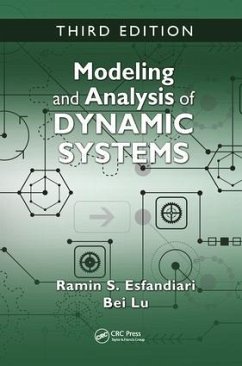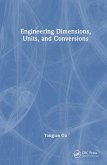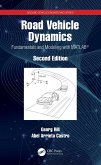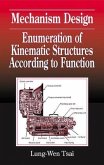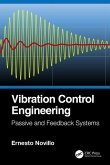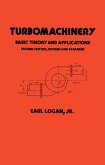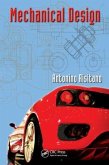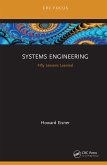- Gebundenes Buch
- Merkliste
- Auf die Merkliste
- Bewerten Bewerten
- Teilen
- Produkt teilen
- Produkterinnerung
- Produkterinnerung
Modeling and Analysis of Dynamic Systems, Third Edition introduces MATLAB®, Simulink®, and Simscape(TM) and then utilizes them to perform symbolic, graphical, numerical, and simulation tasks.
Andere Kunden interessierten sich auch für
![Engineering Dimensions, Units, and Conversions Engineering Dimensions, Units, and Conversions]() Yongjian GuEngineering Dimensions, Units, and Conversions153,99 €
Yongjian GuEngineering Dimensions, Units, and Conversions153,99 €![Road Vehicle Dynamics Road Vehicle Dynamics]() Georg RillRoad Vehicle Dynamics164,99 €
Georg RillRoad Vehicle Dynamics164,99 €![Mechanism Design Mechanism Design]() Lung-Wen TsaiMechanism Design164,99 €
Lung-Wen TsaiMechanism Design164,99 €![Vibration Control Engineering Vibration Control Engineering]() Ernesto NovilloVibration Control Engineering144,99 €
Ernesto NovilloVibration Control Engineering144,99 €![Turbomachinery Turbomachinery]() Earl LoganTurbomachinery164,99 €
Earl LoganTurbomachinery164,99 €![Mechanical Design Mechanical Design]() Antonino RisitanoMechanical Design223,99 €
Antonino RisitanoMechanical Design223,99 €![Systems Engineering Systems Engineering]() Howard EisnerSystems Engineering73,99 €
Howard EisnerSystems Engineering73,99 €-
-
-
Modeling and Analysis of Dynamic Systems, Third Edition introduces MATLAB®, Simulink®, and Simscape(TM) and then utilizes them to perform symbolic, graphical, numerical, and simulation tasks.
Produktdetails
- Produktdetails
- Verlag: Taylor & Francis Ltd (Sales)
- 3rd edition
- Seitenzahl: 595
- Erscheinungstermin: 9. Februar 2018
- Englisch
- Abmessung: 254mm x 178mm x 33mm
- Gewicht: 1279g
- ISBN-13: 9781138726420
- ISBN-10: 1138726427
- Artikelnr.: 51979670
- Herstellerkennzeichnung
- Libri GmbH
- Europaallee 1
- 36244 Bad Hersfeld
- gpsr@libri.de
- Verlag: Taylor & Francis Ltd (Sales)
- 3rd edition
- Seitenzahl: 595
- Erscheinungstermin: 9. Februar 2018
- Englisch
- Abmessung: 254mm x 178mm x 33mm
- Gewicht: 1279g
- ISBN-13: 9781138726420
- ISBN-10: 1138726427
- Artikelnr.: 51979670
- Herstellerkennzeichnung
- Libri GmbH
- Europaallee 1
- 36244 Bad Hersfeld
- gpsr@libri.de
Dr. Ramin S. Esfandiari is a professor of Mechanical and Aerospace Engineering at California State University, Long Beach (CSULB). He received his B.S. in Mechanical Engineering, as well as his M.A. and Ph.D. in Applied Mathematics (Optimal Control), from the University of California, Santa Barbara. He has authored several refereed research papers in high-quality engineering and scientific journals, such as the Journal of Optimization Theory and Applications, Journal of Sound and Vibration, Optimal Control Applications and Methods, and the ASME Journal of Applied Mechanics. He is the author of Numerical Methods for Engineers and Scientists Using MATLAB, Second Edition (Taylor & Francis/CRC Press, 2017); Applied Mathematics for Engineers, Fifth Edition (Atlantis, 2007); Matrix Analysis and Numerical Methods for Engineers (Atlantis, 2007); and the MATLAB Manual for Advanced Engineering Mathematics (Atlantis, 2007). Dr. Esfandiari is one of the selected few contributing authors for the Mechanical Engineering Handbook (Springer-Verlag, 2009), and co-author (with Dr.H.V.Vu) of Dynamic Systems: Modeling and Analysis (McGraw-Hill, 1997). He is the recipient of numerous teaching and research awards, including two Meritorious Performance and Professional Promise Awards, the TRW Excellence in Teaching and Scholarship Award, and the Distinguished Faculty Teaching Award. Dr. Bei Lu is a professor in the School of Aeronautics and Astronautics at Shanghai Jiaotong University (SJTU), China. Before joining STJU in 2017, she was a professor of Mechanical and Aerospace Engineering at California State University, Long Beach. Dr. Lu received her B.S. and M.S. degrees in Power and Mechanical Engineering from Shanghai Jiaotong University, China in 1996 and 1999, respectively, and her Ph.D. degree in Mechanical Engineering from North Carolina State University (Raleigh, NC) in 2004. Her main research interests include robust control, linear parameter-varying control of nonlinear systems, and application of advanced control and optimization techniques to aerospace, mechanical and electromechanical engineering problems. She has published nearly 40 research papers in high-quality and recognized journals such as the AIAA Journal of Guidance and Control, Control and Dynamics, the IEEE Transactions on Control Systems Technology, Automatica, Systems and Control Letters, and in international conference proceedings. She is also the recipient of the Northrop Grumman Excellence in Teaching Award, 2011.
1. Introduction to MATLAB
Simulink
and Simscape 2. Complex Analysis
Differential Equations
and Laplace Transformation 3. Matrix Analysis 4. System Model Representation 5. Mechanical Systems 6. Electrical
Electronic
and Electromechanical Systems 7. Fluid and Thermal Systems 8. System Response 9. Introduction to Vibrations 10. Introduction to Feedback Control Systems
Simulink
and Simscape 2. Complex Analysis
Differential Equations
and Laplace Transformation 3. Matrix Analysis 4. System Model Representation 5. Mechanical Systems 6. Electrical
Electronic
and Electromechanical Systems 7. Fluid and Thermal Systems 8. System Response 9. Introduction to Vibrations 10. Introduction to Feedback Control Systems
1. Introduction to MATLAB
Simulink
and Simscape 2. Complex Analysis
Differential Equations
and Laplace Transformation 3. Matrix Analysis 4. System Model Representation 5. Mechanical Systems 6. Electrical
Electronic
and Electromechanical Systems 7. Fluid and Thermal Systems 8. System Response 9. Introduction to Vibrations 10. Introduction to Feedback Control Systems
Simulink
and Simscape 2. Complex Analysis
Differential Equations
and Laplace Transformation 3. Matrix Analysis 4. System Model Representation 5. Mechanical Systems 6. Electrical
Electronic
and Electromechanical Systems 7. Fluid and Thermal Systems 8. System Response 9. Introduction to Vibrations 10. Introduction to Feedback Control Systems

